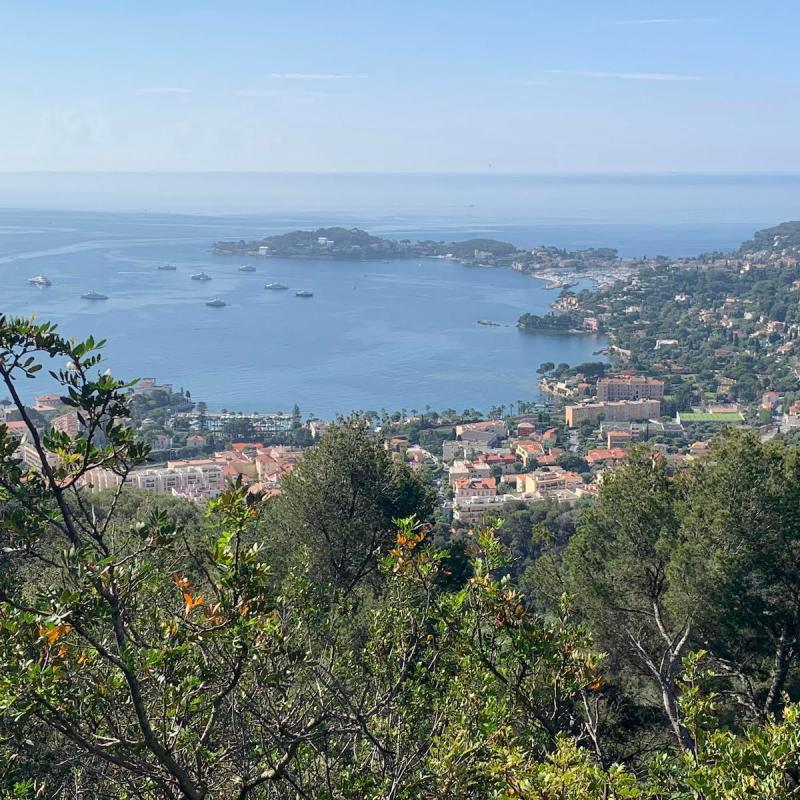
A picture-perfect, panoramic coastal oasis that has been the playground of the rich and famous for centuries, exploring the French Riviera is a good idea any time of year. During the months of July and August, the French Riviera is awash with tourists busily enjoying the beaches and Mediterranean sunshine. Sun-drenched days on gorgeous beaches give way to party-filled nights attracting sun-worshipers from across the globe.
Videos by TravelAwaits
Cities, towns, and villages on the French Riviera — also known as the Côte d’Azur (“Coast of Azure”) — include Nice, Saint-Tropez, Eze, Cannes, Antibes, Grimaud, Toulon, and many more. Although not in France, the French Riviera also includes Monaco.
Note: Some information in this piece was obtained during a sponsored press trip. All recommendations are my own.

1. The Weather
In July and August, the average high temperature on the French Riviera is 84 degrees Fahrenheit. The average low is 64 degrees. Also, the average rainfall in the summer is between 1.2 and 1.6 inches. It is perfect weather for lush greenery, days and days of sunshine, and comfortable nights kissed by sea breezes.

2. The Beaches
The first thing you think of when you say “French Riviera” is the beaches. There is a variety of beaches across the Côte d’Azur and not all of them have soft white sand.
Plage des Marinieres in Villefranche-sur-Mer is situated on a large bay with calm water. The sand is soft and the beach is long and narrow.
Larvotto Beach in Monte Carlo is the place to see and be seen. The water is lovely and nets are used to protect the swimming area from jellyfish. The gravel-covered beach requires beach shoes to protect your feet.
The beach in Nice is super popular with locals and tourists. It is a long narrow beach completely covered in pebbles. Sneakers or water shoes are necessary, although it is fun to watch barefoot swimmers hop and teeter as they pick their way to the water. You can also rent lounge chairs for the day with restaurant service while you sunbathe.

3. The Food
The food of the French Riviera draws from sea and land, showcasing classic French dishes with the lightness of summer on the coast.
Pissaladière is made with sweet, caramelized onions; briny anchovies; and olives that top this traditional Provençal tart.
Aïoli is a traditional Provençal dish made with salt cod and accompanied by boiled potatoes along with an assortment of seasonal ingredients like escargot, octopus, and hard-boiled eggs.
Of course, bouillabaisse, believed to originate in Marseille, is a traditional Provençal fish soup. Made with the freshest catch, bouillabaisse includes racasse (a must for a true Marseille version), whiting, conger eel, mullet, mussels, and other gifts from the sea.
Taste test other delicious regional dishes including salade niçoise, panisse (fried chickpea cakes), ratatouille niçoise, soupe au pistou, tians de légumes (vegetable tart), along with other fabulous French delicacies.

4. The Markets
Markets are a window into the life of local residents. It’s where they offer regional specialties in a colorful array of displays. French markets draw you in, enlivening all your senses.
Flowers, produce, and shopping markets pop up in “old town” central squares weekly; daily in some areas. You definitely want to wander through the markets even if you aren’t ready to buy anything. Immerse yourself in the aromas of flowers at their peek, ripe cheeses, and freshly baked bread; you will feel like a native. Shop for trinkets, antiques, and the latest fashion as you meander slowly from tent to tent.

5. The Art & Culture
The long history of the French Riviera and its sustained beauty has drawn aristocrats and artists for centuries.
Dedicated to artists who lived, worked, and studied in the south of France, over three dozen museums dot the French Riviera. The Musée Matisse in Nice is devoted to the work of French painter Henri Matisse, tracing his artistic beginnings and evolution through his final works. The Musée Picasso is housed in the former Château Grimaldi in Antibes. The Marc Chagall National Museum, also in Nice, is a French national museum dedicated to the regional works of painter Marc Chagall.
The Monte Carlo Casino is a showstopping display of opulence. Enormous crystal chandeliers play off the gold trim and vibrant, saturated colors of the gaming rooms. It is a study in luxurious finishes.

6. The Crowds
Summer is one of the best ways to experience the Riviera. It is vibrant and alive. Sidewalk cafés are filled with happy hour guests sipping a glass of rosé or an Aperol Spritz and people watching. Wide sidewalks are crowded with pedestrians out for a leisurely stroll. Benches along beach walks are filled with tanned bodies enjoying the last fragments of the day. It is a magical time to visit.
Both the French and Italian Rivieras during the summer months are crowded with tourists. The beaches are packed with sun worshipers, the restaurants are filled with happy customers, the markets are lively, and the streets are filled with tour groups.
Pro Tip: It is prudent to make restaurant reservations, even for the most obscure spots.
7. The Festivals
There is always something fun and festive happening along the French Riviera. Sometimes, you only need to wander down to the beach to find a festive party.
There are several big-draw festivals over the summer. The Festival of Pyrotechnic Art in Cannes is an explosion of fireworks. The Nice Jazz Festival is a July tradition. And, the Classic Music Festival in Menton has been entertaining summer audiences for decades.

8. The History
The French Riviera became popular for winter vacations in the mid-to-late 18th century. When the railroad arrived in the mid-19th century, the Côte d’Azur’s popularity increased, seeing aristocrats from not only Great Britain but Russia and other European countries.
Coco Chanel visited in the summer of 1923 and returned to Paris with a beautiful tan — after that, everyone wanted a tan like Coco. The stunning actress Brigitte Bardot brought a cachet to the French Riviera with her movie And God Created Woman, featuring many scenes shot on the beach of Pampelonne near St Tropez.
Well-healed Americans arrived to sunbathe in the glorious Mediterranean climate and escape their busy lives. The inaugural Cannes Film Festival in 1940 brought throngs of celebrities to the Côte d’Azur and set the region on its path as a playground for the rich and famous.

9. The Fashion
Fashionistas strut their best rags along the promenades any time of day. Sophisticated Europeans donning haute couture grace bars, clubs, restaurants, cafés, and shops. Take a peek at the French Riviera fashion covering the markets in Nice and all along the Côte d’Azur.
Pro Tip: It is easy to spot American male tourists. They are typically decked out in khaki shorts and a golf shirt, making them prime targets for pickpockets. Women blend in wearing flowing summer dresses giving off the breezy Riviera vibe.

Where To Stay On The French Riviera
Few spots on the French Riviera are as classic as Le Negresco. The swanky, five-star hotel is a Nice landmark. If a getaway stay is not in the cards, be sure to stop by the bar and enjoy a signature cocktail. After, stroll through the lobby and enjoy the amazing art gallery in the rotunda.
The Hotel de Paris Monte Carlo is another luxuriously posh spot to stay on the Riviera. Located right across the street from the Monte Carlo Casino, it offers a prime spot to view the parade of amazing automobiles passing by the casino.
Just A Summer Locale — The French Riviera
A vacation along the French Riviera at the height of tourist season is a wonderful way to visit southern France. It’s time to pack a bag full of swimsuits and explore all the charming seaside villages, towns, and cities along the sun-soaked Mediterranean coastline.

